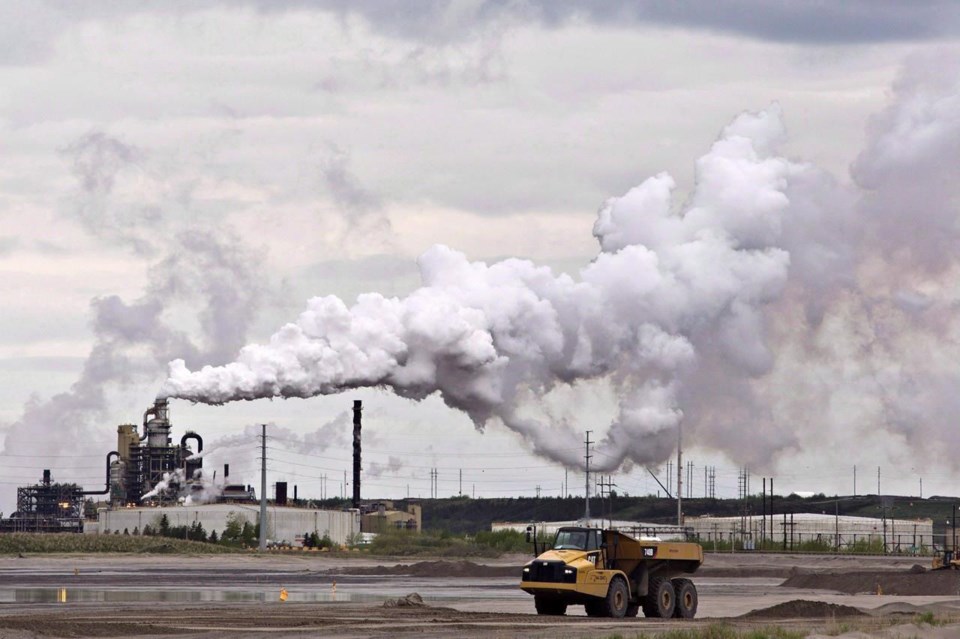EDMONTON — Alberta is preparing to change how it ensures oilsands companies are able to pay for the mammoth job of cleaning up their operations, but critics fear a year of consultations hasn't been enough to avoid repeating past mistakes.
"There's no signal to me from this government that they are going to hold industry accountable for clean-up costs," said Melody Lepine of the Mikisew Cree First Nation, one of the Indigenous groups consulted.
Official estimates price that cleanup at $33 billion while internal estimates from the Alberta Energy Regulator put it closer to $130 billion. Even at the lower figure, industry has only put up about four per cent of the money required, a percentage that is shrinking as the liability grows.
After two highly critical reports from the province's auditor general, Alberta's United Conservative government began considering reforms to the Mine Financial Security Program in January 2022 through a series of meetings with industry and area First Nations.
Consultation ended this month. No public hearings were held and no public input was sought.
"We anticipate completing the review of this program in 2023, with implementation of any changes, if necessary, beginning in 2024," Alberta Environment and Protected Areas spokesman Jason Penner wrote in an email.
The provincial government did not address concerns raised by the First Nations in response to queries from The Canadian Press.
After attending all the meetings, four First Nations submitted a document to the government, obtained by The Canadian Press, that suggests they fear meaningful reform is not forthcoming.
"(The Athabasca Region First Nations') overall assessment is that the review was often perfunctory, especially in the initial phase, and that (Alberta Energy Regulator) and (Alberta Environment and Parks) staff were often defensive and less than forthcoming," it said.
The document outlines a series of concerns with the direction First Nations fear the government is going.
"It is a lot of the same concerns the (auditor general had)," said Martin Olszynski, a University of Calgary resource law professor who worked as a consultant to the groups.
The document said the program is not designed for an increasingly low-carbon world. Mine closures are slated to coincide with worldwide net-zero targets, meaning oil demand — and its price — are likely to start falling just as that money is needed for cleanups.
University of Alberta energy economist Andrew Leach was also hired as a consultant to the First Nations. He concluded the assumptions used in the government's modelling of the industry's future were unconvincing and simplistic.
"The models provided to me … provide a false and dangerous sense of security," he wrote.
Leach said the government's direction will work if oil prices remain stable or increase. If they don't, Alberta — and its taxpayers — risk having to cover a vast liability left stranded.
"Within the bounds of current scenarios examined by major energy analysts, there are several scenarios under which existing oilsands projects cease to be viable," Leach wrote.
Companies still are not required to release projected clean-up costs, the document said.
Although companies are required to return their operations to "equivalent land usage," the First Nations say they have not been consulted on what that means.
The document said the regulator consistently overvalues oilsands assets, a calculation used to gauge how much companies must set aside. It points to one case where an oilsands asset that was sold for $5.5 billion was valued by the regulator at $37 billion.
The First Nations say the integrity of the process was undermined when, midway through the process, the government changed the rules on how companies guarantee they will pay for cleanup.
The Alberta Energy Regulator now accepts a type of demand bond issued by an insurance company instead of cash reserves or a line of credit. A spokesman for the regulator said some companies are using such bonds, but information on how many, who they are or the size of the bonds is "confidential."
Thomas Schneider, associate professor of accounting at Toronto Metropolitan University, said accepting an insurance policy instead of requiring companies to set resources aside will allow producers to delay reserving the billions of dollars the cleanup will take even as some mines approach end of life.
"As these liabilities grow and grow and grow … (industry) is trying to figure out as many ways as they can to delay the timing that they have to tie up capital."
As well, documents released under freedom-of-information legislation suggest the government has considered accepting bonds from so-called captive insurance companies, which are wholly owned by oilsands companies.
The government hired consultants to study whether such bonds put taxpayers at risk. In a heavily redacted report, Marsh consulting said the bonds themselves weren't inherently riskier than lines of credit.
But Marsh warned that it wasn't possible to make a reliable estimate of risk from captive insurance companies, a corporate structure enabled by legislation passed in 2022.
"To complete the assessment for a captive insurance company would be challenging as each captive could be differently capitalized," the report says. "Thus, it would be difficult to assess the inherent likelihood of default without making very broad assumptions."
The regulator does not currently accept bonds from captive insurance companies.
Mark Cameron of Pathways Alliance, an association of Canada's six largest oilsands producers, said the group is waiting for the government's decision on reforms.
"The Pathways Alliance appreciates the opportunities provided by Alberta Environment and Protected Areas to engage with and hear from Indigenous communities," he said in an email.
The stakes, said Lepine, could not be higher. Taxpayers have billions of dollars on the line, but First Nations have even more.
"We got nowhere else to go. It's been our home for thousands of years," she said.
"But if it becomes a toxic wasteland, will we be forced to leave? I don't know."
This report by The Canadian Press was first published Jan. 26, 2023.
Bob Weber, The Canadian Press


